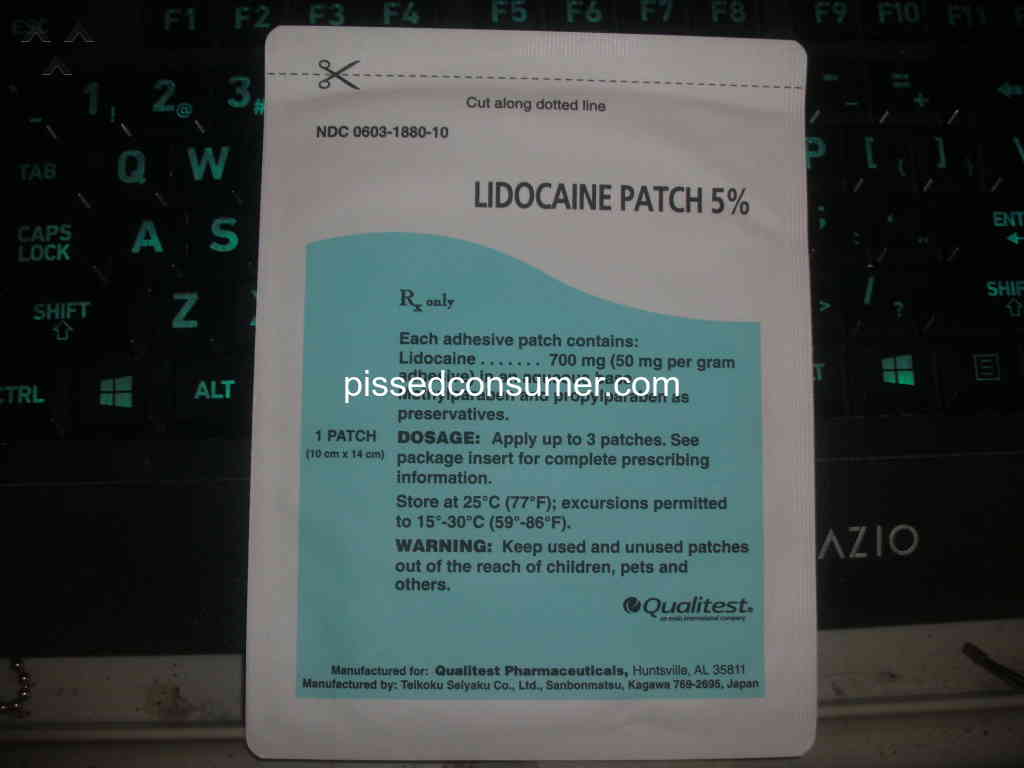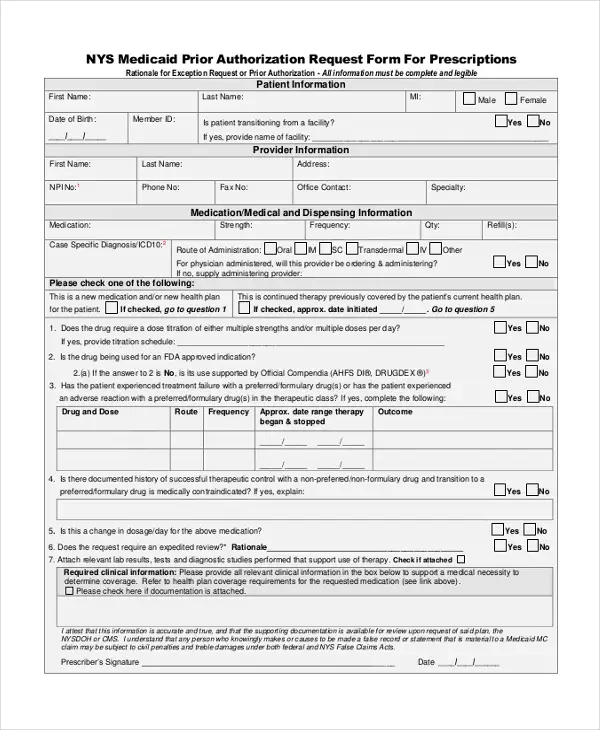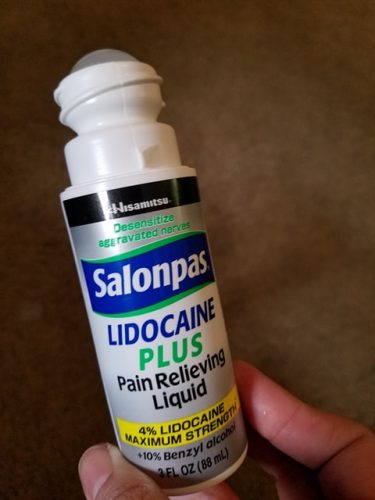Forms For State Mandates
Universal form for state mandates
The use of this form is mandated for prior authorization requests concerning commercial fully insured members:
- Who reside in Arkansas, Mississippi or Oklahoma and/or
- Whose prescription drug coverage was sold in a state listed above
The use of this form is mandated for prior authorization requests concerning commercial fully insured members:
- Who reside in the state of California, and/or
- Whose prescription drug coverage was sold in the state of California
The use of this form is mandated for prior authorization requests concerning commercial fully insured members:
- Who reside in the state of Colorado and/or
- Whose prescription drug coverage was sold in the state of Colorado
Illinois authorization request form
Physicians and healthcare practitioners in Illinois should use this form to submit authorization requests for their Humana commercial fully insured covered patients and residents. Please complete the form and submit it to Humana by following the instructions on the form.
Kentucky Medicaid Authorization Form
Physicians and health care practitioners in Kentucky may use this form to submit authorization requests for their Humana-Medicaid covered patients. Please complete the form and submit it to Humana by following the instructions on the form.
New Mexico authorization request form
Texas authorization form
Medicare Part A Costs
Medicare Part A is your hospital insurance. While you are admitted to the hospital, you will be responsible for the following costs under Part A:
- $1,408 deductible for each benefit period before coverage kicks in
- $0 coinsurance for each benefit period for the first 60 days
- $352 coinsurance per day of each benefit period for days 61 to 90
- $704 coinsurance per each lifetime reserve day after day 90 for each benefit period
- 100 percent of costs beyond your lifetime reserve days
What Are The Possible Side Effects Of Lidocaine Topical
Get emergency medical help if you have signs of an allergic reaction: hives difficulty breathing swelling of your face, lips, tongue, or throat.
- severe burning, stinging, or irritation where the medicine was applied
- swelling or redness
- sudden dizziness or drowsiness after medicine is applied
- confusion, blurred vision, ringing in your ears or
- unusual sensations of temperature.
Recommended Reading: Does Medicare Cover Laser Surgery
What Is The Most Important Information I Should Know About Lidocaine Topical
An overdose of numbing medicine can cause fatal side effects if too much of the medicine is absorbed through your skin.
Do not use large amounts of lidocaine topical, or cover treated skin areas with a bandage or plastic wrap without medical advice.
Keep both used and unused lidocaine skin patches out of the reach of children or pets. The amount of lidocaine in the skin patches could be harmful to a child or pet who accidentally sucks on or swallows the patch.
What Is Lidocaine Topical

Lidocaine is a local anesthetic . There are many brands and forms of lidocaine available. Not all brands are listed on this leaflet.
Lidocaine topical is used to reduce pain or discomfort caused by skin irritations such as sunburn, insect bites, poison ivy, poison oak, poison sumac, and minor cuts, scratches, or burns. Lidocaine topical is also used to treat rectal discomfort caused by hemorrhoids.
Lidocaine topical may also be used for purposes not listed in this medication guide.
Read Also: How Much Does Medicare Pay For Physical Therapy In 2020
Medicare Part C Costs
Costs under a Medicare Part C plan will be different and will depend on which plan you have and how much coverage youve chosen. The coverage you have under a Part C plan must be at least equal to what original Medicare covers.
Some forms of outpatient pain management are also covered under Medicare Part B. This includes things like:
- medication management
- manipulation of the spine, if medically necessary
- outpatient injections
- transcutaneous electrical nerve stimulation for pain after a surgical procedure
- autogenous epidural blood graft for headaches after an epidural or spinal tap
What Should I Discuss With My Healthcare Provider Before Using Lidocaine Topical
You should not use lidocaine topical if you are allergic to any type of numbing medicine.
Fatal overdoses have occurred when numbing medicines were used without the advice of a medical doctor . However, overdose has also occurred in women treated with a numbing medicine before having a mammography.
Be aware that many cosmetic procedures are performed without a medical doctor present.
Tell your doctor if you have ever had:
- liver disease or
- if you take a heart rhythm medicine.
Tell your doctor if you are pregnant or breastfeeding.
If you apply lidocaine topical to your chest, avoid areas that may come into contact with the baby’s mouth.
Read Also: Do I Have To Pay For Medicare On Ssdi
Apple Health Preferred Drug List
The Health Care Authority implemented the Apple Health Preferred Drug List on January 1, 2018. All managed care plans and the fee-for-service program serving Apple Health clients use this PDL.
Preferred drugs within a chosen therapeutic class are selected based on clinical evidence of safety, efficacy, and effectiveness. The drugs within a chosen therapeutic class are evaluated by the Drug Use Review Board, which makes recommendations to HCA regarding the selection of the preferred drugs.
Does Medicare Cover Lidocaine Patches
Local anesthetics that can be applied topically through an adhesive patch provide a degree of comfort and ease of use that many recipients may favor over other pain-relieving methods.
Understanding How Lidocaine Patches Work
Lidocaine patches are used to target specific areas of the body that may be experiencing a burning, aching or stabbing type of pain. While the adhesive patch is worn, the skin slowly absorbs the anesthetic which prevents pain signals from being sent through the nerves and into the brain. This medication has proven effective for certain types of lower back pain, but Lidocaine patches are most often prescribed for the neuralgia that can persist after a shingles outbreak.
Your prescribing physician will advise you on how many patches should be used at one time and for how long, but its important to follow these instructions carefully. Typically, wearing more than three patches for longer than 12 hours in one day can result in an adverse reaction. Lidocaine patches may come in one container that should remain closed between uses since these patches can dry out and become ineffective.
Side Effects and Risks Associated with Lidocaine Patches
While its common to feel a tingling, mild burning sensation or notice a little redness and swelling when the patch adheres to the skin, anything that persists or becomes severe should be given immediate medical attention.
Medicare Coverage for Lidocaine Patches
Relate articles:
Recommended Reading: How Often Does Medicare Pay For A1c Blood Test
Improve Medicare For All Beneficiaries
Medicare is extremely popular, but it needs attention to ensure all beneficiaries receive comprehensive coverage and equitable treatment. The Medicare program that Americans know and cherish has been allowed to wither. Traditional Medicare, preferred by most beneficiaries, has not been improved in years, yet private Medicare Advantage plans have been repeatedly bolstered. Its time to build a better Medicare for all those who rely on it now, and will in the future.
Puerto Rico Prior Authorization
For pharmacy drugs, prescribers can submit their requests to Humana Clinical Pharmacy Review Puerto Rico through the following methods:
Phone requests: 1-866-488-5991
Hours: 8 a.m. to 6 p.m. local time, Monday through Friday
Fax requests: Complete the applicable form below and fax it to 1-855-681-8650. To submit a request for a professionally administered drug, see the information at the bottom of this Web page.
This guide helps prescribers determine which Humana medication resource to contact for prior authorization, step therapy, quantity limits, medication exceptions, appeals, precertification and claims. It also provides applicable phone, fax and Web contact information.
Read Also: What Is Better Original Medicare Or Medicare Advantage
Report Problems With Your Medications To The Fda
You are encouraged to report negative side effects of prescription drugs to the FDA. Visit the FDA MedWatch website or call 1-800-FDA-1088.
The opinions expressed in WebMD Communities are solely those of the User, who may or may not have medical or scientific training. These opinions do not represent the opinions of WebMD. Communities are not reviewed by a WebMD physician or any member of the WebMD editorial staff for accuracy, balance, objectivity, or any other reason except for compliance with our Terms and Conditions. Some of these opinions may contain information about treatments or uses of drug products that have not been approved by the U.S. Food and Drug Administration. WebMD does not endorse any specific product, service or treatment.
Do not consider Communities as medical advice. Never delay or disregard seeking professional medical advice from your doctor or other qualified healthcare provider because of something you have read on WebMD. You should always speak with your doctor before you start, stop, or change any prescribed part of your care plan or treatment. WebMD understands that reading individual, real-life experiences can be a helpful resource, but it is never a substitute for professional medical advice, diagnosis, or treatment from a qualified health care provider. If you think you may have a medical emergency, call your doctor or dial 911 immediately.
How To Deal With Lidocaine Patch Prior Authorizations:

So how do you deal with this situation as a patient or as a pharmacist or pharmacy technician? The following is just my advice. I am not suggesting this is how you personally have to handle it. But this is the way we typically approach the situation in pharmacies that I manage.
FIRST, always try to bill your primary insurance to see if it is covered. Some plans will cover these patches without any approvals required at all.
SECOND, if they are NOT covered, ask the pharmacy if they would be willing to notify your doctors office of the need for a prior authorization. Most pharmacies will at least FAX a notification for you to your doctor. This process can take several days or longer to happen.
THIRD, consider USING A DISCOUNT CARD. Ask the pharmacy for the CASH price of the lidocaine patch prescription. A discount card is not insurance. They are generally a FREE PBM-sponsored program that will discount the prescription, sometimes substantially. Need a FREE discount card for your lidocaine patch prescription? !
FOURTH, consider paying for a smaller supply of the patches while you wait to see if your insurance will approve them. Using the discount card mentioned above, ask the pharmacy to use the card to process a prescription for 7 lidocaine patches . See what the price is and decide if you can afford to pay that amount. This will give you the chance to try the patches and IF your insurance approves, you may be able to get reimbursed.
Read Also: How To Reorder Medicare Card
Lidocaine Patch And Medicare
The most read article in this blog is about the Lidocaine Patch and Medicare Part D plans. I wrote about this last year when a client called me to complain that she could no longer get the Lidocaine Patch through her Medicare Advantage plan. Over 20 people have left comments about their frustration with non-coverage of this pain medication. You can see those comments by clicking here and scrolling below the article: Lidocaine Patch Not Covered by Part D.
How To Use The Apple Health Pdl
The Apple Health PDL has products listed in groups by drug class. To obtain authorization for a nonpreferred drug, a client must have tried and failed, or is intolerant to, a designated number of preferred drugs within the drug class unless contraindicated or not clinically appropriate. The designated number of preferred drugs is listed on the Apple Health PDL.
In addition to approval criteria for nonpreferred products, some drugs have additional criteria that must be met. The requirement for additional criteria is noted in the columns on the Apple Health PDL.
Note: For continuity of care, all plans will use the same PA criteria, step therapy edits, and quantity limits developed by HCA.
Recommended Reading: What Age Qualifies You For Medicare
Why All Of A Sudden Is The Lidocaine Patch Not Covered By Part D
Shirley is in her 80s and has severe back pain due to scoliosis. She has tried other pain medications, but they did not help and they affected her balance. The Lidocaine patch has given her relief and it has been covered by her Medicare Advantage plans Part D until recently.
Shirley was enrolled with Health Net for several years and the Lidocaine patch was covered. She changed to Blue Cross Blue Shield of Arizona Advantage and they say they cant pay for this prescription.
I checked with CMS and a pharmacy specialist got me the answer: The Lidocaine patch is prescribed for only one condition, post-herpetic neuralgia, which is a complication from shingles. That is the only usage for which her Part D plan can pay for the patch.
The following is from Chapter 6 of the Medicare Prescription drug manual regarding the use of drugs and the need for FDA indication or compendia listing.
Part D sponsors are responsible for ensuring that covered Part D drugs are prescribed for medically-accepted indications. Part D sponsors may rely on utilization management policies and procedures to make such determinations but pharmacists are not required to contact each prescriber to verify whether a prescription is being used for other than a medically-accepted indication.
The CMS pharmacy specialist said Shirley should appeal the denial, but she might not be happy with the final decision.
Submitting A Request For Prior Authorization
A request must be submitted and approved in advance for medications requiring a prior authorization, before the drugs may be covered by Humana.
Prescribers can submit their requests to Humana Clinical Pharmacy Review in the following ways:
Electronic requests: CoverMyMeds® is a free service that allows prescribers to submit and check the status of prior authorization requests electronically for any Humana plan. You can access this service directly or review the flyer below for details.
Fax requests: Complete the applicable form and fax it to 1-877-486-2621.
Prescriber quick reference guide: This guide helps prescribers determine which Humana medication resource to contact for prior authorization, step therapy, quantity limits, medication exceptions, appeals and claims. It also provides applicable phone, fax and web contact information.
Also Check: Does Social Security Automatically Sign You Up For Medicare
Lidocaine Patch Not Covered By Part D
Is your Lidocaine patch not covered by your Medicare drug plan? Medicare seems to be cracking down on drugs that are prescribed for off label usage. I got an email from a client who has been using the Lidocaine Patch for years and now shes being told her Medicare Advantage plan wont pay for it.
Lidocaine Patches And Prior Authorizations
July 30, 2016 Prescription Drugs Views: 27167
If the conversation has happened once, it has sadly happened a million times:
Patient: Hi, my name is Mr. Smith, Im here to pick up my prescription.
Pharmacist or Tech: Okay. Great. Lets see. Oh.The doctor prescribed you something known as a Lidocaine patch. Unfortunately it is not covered by your insurance. If you want to pay for it, the price would be $250 . Or we could ask your doctor to try and get it approved.
Lidocaine patches OFTEN require a prior authorization. But why!? Allow me to explain and also to offer some suggestions. Please understand that this post is NOT an attempt to give you medical advice. It is intended for informational purposes only.
Recommended Reading: What Is The Annual Deductible For Medicare Part A
Does Medicare Cover Pain Management
Pain management includes a wide spectrum of treatments and techniques that are used to help control and reduce chronic pain due to illness or injury. Coverage for certain forms of treatment may be covered under Medicare Part B while others may require a Medicare Part D prescription drug plan.
Common Types of Pain Management
Effectively treating chronic pain requires a careful evaluation of a patients needs and the underlying causes of their pain. In many cases, a combination of treatment types will be prescribed or suggested.
Developing a plan for pain management may involve input from several health care professionals, especially when prescription medication or medical procedures are required.
Medicare Coverage for Pain Management
Recipients who receive qualifying pain management treatment through outpatient services may have coverage under Medicare Part B. This may include certain types of occupational or physical therapy. Depression or substance abuse screening and individual or group therapy sessions can also fall under Part B coverage terms. These services may require out-of-pocket payments due to the deductible, copayment or coinsurance cost-sharing rules.
Medicare Part D prescription drug plans may cover many of the medications necessary for pain management, but these plans are offered through private insurers and each provider determines which medications are included in their coverage.
Related articles:
Accidental Exposure In Children

Even a used Lidocaine Patch contains a large amount of lidocaine . The potential exists for a small child or a pet to suffer serious adverse effects from chewing or ingesting a new or used Lidocaine Patch, although the risk with this formulation has not been evaluated. It is important for patients to storeand dispose of Lidocaine Patch 5% out of the reach of children, pets and others.
You May Like: When Do Medicare Benefits Kick In
What Happens If I Overdose
Seek emergency medical attention or call the Poison Help line at 1-800-222-1222. An overdose of numbing medicine can cause fatal side effects if too much of the medicine is absorbed through your skin and into your blood.
Overdose symptoms may include uneven heartbeats, seizure , slowed breathing, coma, or respiratory failure .
Lidocaine applied to the skin is not likely to cause an overdose unless you apply more than the recommended dose.
